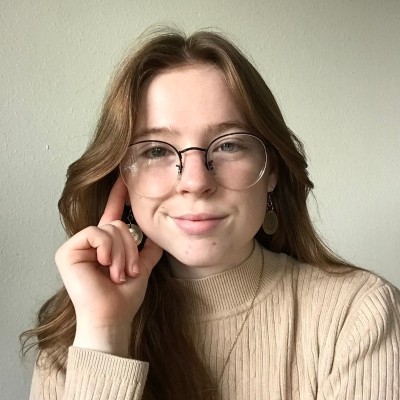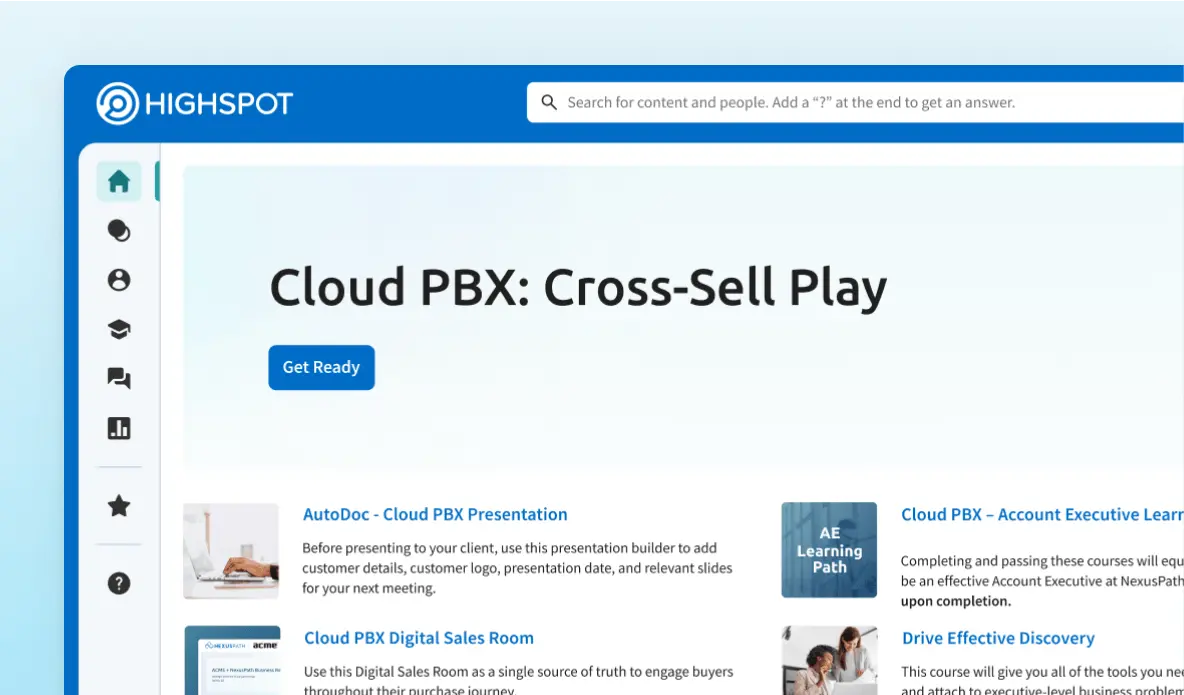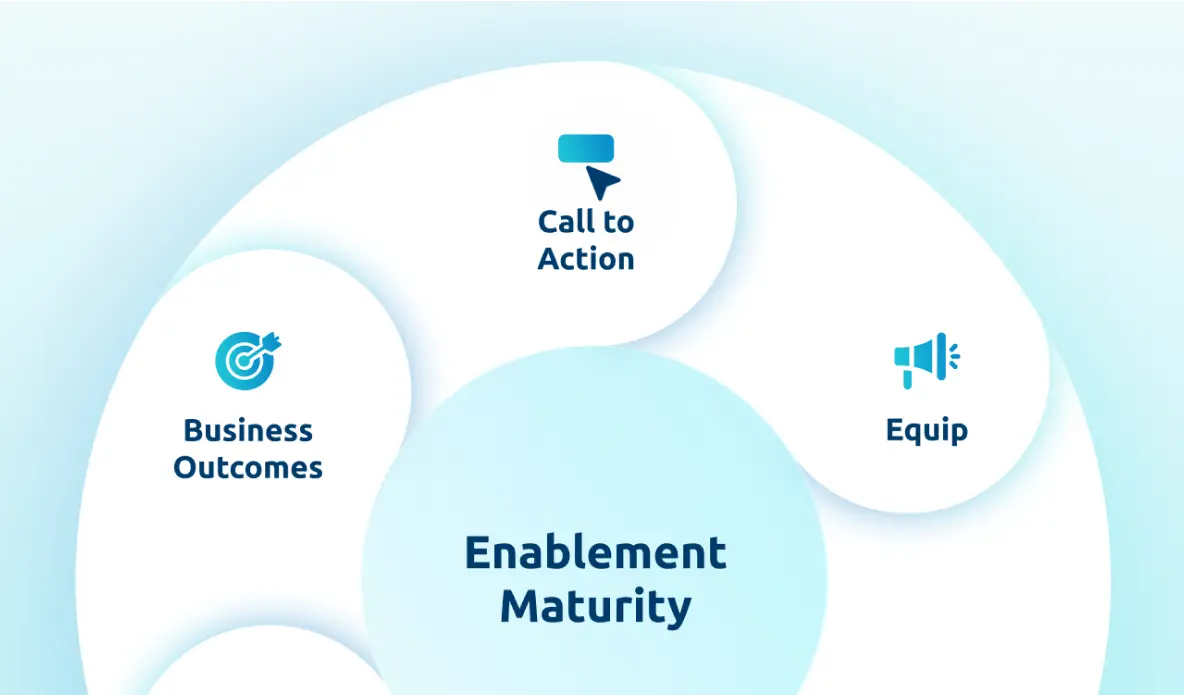According to research from Gartner, 77% of sellers say they struggle to efficiently complete their assigned tasks. So how can you successfully implement an enablement platform that truly helps sellers become more efficient and drive tangible outcomes?
Riley Rogers: Hi, and welcome to the Win-Win podcast. I’m your host, Riley Rogers.
Here to discuss this topic is Alexia Wilkinson, senior sales enablement specialist at Revvity. Thank you for joining us, Alexia. I’d love for you to start just by telling us a little bit about yourself, your background, and your role.
Alexia Wilkinson: Wonderful. Thank you so much for having me. So I’m Alexia Wilkinson, senior sales enablement specialist at Revvity where I’ve been for the past two and a half years.
My career actually began in SaaS sales nearly a decade ago with a strong focus in the life sciences industry. I was based in Boston, so it’s the global hub of biotech and pharma. Over the years, I developed a deep appreciation for the strategic role that enablement plays in driving sales success. So my transition into sales enablement was really fueled by the belief in its power to support new sellers, season professionals and entire sales teams to become more effective, confident, and customer-focused.
So one of the things I love the most about my job at Revvity is the opportunity to be involved. With so many different parts of the business, whether it’s collaborating on sales processes or sales efficiencies, it’s integrating tools into the seller’s daily workflow and making sure they’re working and fit for purpose, and also improving communication across teams.
There’s so many different people to communicate with. We wanna make sure that each initiative contributes to what I see as the foundation of sales excellence. Bringing all of that together, bundling up and making sure that our sales org has the right tools and a clear. Guide and plan into how they can sell effectively.
RR: Amazing. Well, we’re super excited to have you here today. I think you spoke to the role of enablement so eloquently and I know that the great foreshadowing for the session to come. So to kick us off, I’d like to start with something that you mentioned, which is that you’re working in the life sciences industry and that probably creates a few unique scenarios that you have to combat in enablement.
So what are some of the unique challenges that reps in that industry face? Then how can someone like you at enablement help them navigate those unique challenges?
AW: The life sciences space, it’s wide, it’s broad, it’s complex. There’s so many things going on that when you look at sellers who are in this space, it’s not just selling a product.
They’re selling trust. Compliance and scientific credibility in a very highly regulated budget, constrained and an evidence-driven environment. So all of these things contribute to stakes can be high, and the conversations can be really complex. So helping navigate these challenges. Enablement plays a critical role in really navigating what we can do, and so I look at enablement as being the air traffic controller.
I may not be the expert in all the little things like, you know, regulations or some of the scientific evidence that is being done. I can help get the right people from all across the company together and making sure that if this information is in five different spots, it’s all consistent and it’s very clear to help make sure that there’s no friction for the rep moving forward.
So really it’s about making sure that these challenges that I highlighted don’t become obstacles.
RR: Yeah, I really liked the air traffic controller metaphor, kind of connecting all of these disparate groups and building that connective tissue. So you have one team that can run together. I know part of that connective tissue and creating that connective tissue is an enablement tool that can create a single source of truth for all of those conversations.
And I know in the past you had switched off of a previous enablement platform and decided to make the move to Highspot, so I’d love to know a little bit about like. What motivated you to reevaluate, and then how did you make that decision to change your tech stack?
AW: So Revvity is a very large company. It’s a public company, and our company is continuing to evolve. So it’s essential that our sales enablement strategy evolves with it. So it means equipping our teams with not just the right messaging or training. But it really relies on the technology. It’s agile. It needs to be scalable and aligned with our future goals.
So as we look to reevaluate, we wanted a platform that could grow with us. It could adapt to our changing needs and act as a true partner in innovation. So Highspot actually stood out because we felt like they could tackle these three objects for us in this changing environment within life sciences.
And especially with what the platform could do, having all of that in one place was extremely beneficial. So really, this platform allowed us to be more proactive versus reactive in how we support our teams. So really in the end, the decision was about future proofing our enablement strategy and making sure that our sellers have the right tools and insights in this fast-paced competitive environment.
RR: Knowing a little bit about what motivated that decision and how you came to your conclusion of what the right platform might be for you. I know that next step is never easy of, we’ve chosen a tool and now we have to implement it, and that’s the hard part. So knowing that you guys just recently went through that implementation process, I’d be curious to know from your perspective.
What are some of the common pitfalls that you think organizations might encounter when rolling out a new enablement platform? And then how can they be avoided when you’re prepping for that launch?
AW: So three common pitfalls that I see is one being treating the platform as a simple content repository.
People may look at it as just a place to store assets and. If that happens, reps are gonna struggle to find what they need and adoption declines quickly. Another challenge is lack of governance. Without clear ownership or defined guardrails, materials are gonna become outdated or really irrelevant. And additionally, if the platform is not integrated into tools and workflows that sellers use daily, it’s just gonna become disconnected and reps are not gonna wanna use it.
So from these three things, I think to avoid these issues, it’s essential to establish clear, consistent messaging across all stakeholders and making sure that they understand it’s the single source of truth for all things. It can be about connecting the right material, making sure everything is relevant, and also the actionable resources are up to date.
Also ensuring that there’s strong governance and fully leveraging integrations are just going to help again, make sure we’re driving both adoption and long-term success.
RR: Yeah, I think those are all really important things to be cognizant of as you’re trying to embark on a big change like that.
Implementing a tool, like I said, never easy, but with the right support in place, you’re better prepared to make it happen. Kind of on that subject, we saw on LinkedIn that you highlighted achieving cross-functional leadership and helping create alignment there as a key strength of yours. So during a new platform rollout like the one you just did, how do you effectively communicate with cross-functional teams and create that alignment that leads to a successful rollout?
AW: I will say cross-functional leadership was not a key strength while back in the day. I’ve had a lot of experiences and opportunities to learn from. So being able to showcase that as a strength, it’s because of my past and all the great things that have happened in my career. So looking at this new platform rollout.
Effective communication starts early. It’s bringing in those cross-functional teams into the fold from the beginning. So taking a look at our new rollout of Highspot, we did an internal road show. So we were sharing the high level vision and the rollout plan. So it’s not just about informing them, it’s about making them a part of the journey.
So throughout the rollout, ongoing communication is key. I think the key thing here is people wanna be proactive contributors and not reactive participants. So when teams where colleagues feel that they’re an afterthought, it’s harder to build momentum and support. So that’s why with this rollout, we really prioritized updating and engaging across business units, sales, leadership, marketing, frontline managers, users on ensuring that everyone was aligned but also excited.
It with this internal road show, we made space for early feedback, so if there was a group that maybe didn’t feel like it was the right move, let’s hear it and let’s understand it better. If we have a group that really wants to be on board, how can we bring them in earlier and make sure that they’re set up for success?
So that really contributed to the communication and making sure the alignment happened early on.
RR: I appreciate the call out that these aren’t skills that you get overnight. The people management part of it is hard and it takes a long time to learn it. But I will say, looking at the data, it seems like you and the team have really landed it.
Even in the early stages of your Highspot implementation, you’ve already achieved a pretty impressive 88% platform adoption. So. In addition to that early alignment, how did you drive that high adoption and build excitement for your programs, especially among your sales teams who are gonna be those end users?
AW: Thank you so much for highlighting the 88% platform adoption. It is a number that makes me smile, and I couldn’t have done it without the team, our users, and our stakeholders as well. So really how we began is we wanted to do a global launch initiative. We wanted to ensure every sales team member, regardless of their location, was introduced to Highspot in the same consistent and engaging way.
So we really focused embedding Highspot into the daily rhythm of the business. So looking at making sure Highspot was brought up on reoccurring meetings. We did a kickoff training session over a few weeks. We hosted office hours, a lot of office hours over the first month and a half, and we even brought it into our SKO.
So all of these touch points helped reinforce the platform’s value and also made people be like, what is Highspot? What is it I need to know about it? So that was one part of how we drove that adoption, but we have to look at who’s also helping us. So another major contributor to our success is our strong partnership with our product marketing team.
They helped amplify the message and they drove awareness because they have close relationships with our sales teams, product management, and there’s a lot that’s to it. So thinking about the excitement part of your question, we wanted to keep engagement high after the initial excitement of the global launch, and we decided to launch bite-size learning series.
We actually call it Highspot Hacks and Hints, and we send it out about one or two times a month. We release a short video under five minutes, and we also include instructions and best practices showcasing that tip or trick within Highspot. So we wanted to make sure that learning was approachable and it allowed users to build confidence, an entirely new platform that may be a little bit overwhelming when they first log in.
RR: And on a similar note, in addition to just platform adoption more broadly, we’ve also seen that you’ve achieved a 55% adoption rate in digital rooms, which is really impressive because that’s significant behavior change to get reps communicating out of a different platform than maybe they’re used to. So how did you drive success there?
And then how are your reps using digital rooms to improve the buyer experience?
AW: Great question. So as we were evaluating digital rooms was a top priority for us because our previous enablement platform offered a similar feature. And from feedback, we know that our teams heavily relied on that to engage with prospects and customer.
So going into how we wanted to make sure reps could easily use digital rooms, we focused on how it’s delivering a custom experience for that customer or situation and being able to have a little bit of a creative flare with it. So with that. The message was again, tailoring the experience to the buyer, being able to then take the real time notifications that are from digital rooms and empowering the reps to follow up more effectively and also personally.
So showcasing the why behind setting up a digital room that’s more custom is the answer to driving a buyer experience in a positive way. So as we looked at the early success. We built digital room templates that had remedy branding, a little bit of pre-populated content, just making it easier for reps to jump in and not feel like it was such a time consuming task.
So that’s what we did right away. And then from there, our reps are incredible. They’re creative. They are wanting to collaborate and really lean on one another. So since the launch, we’ve showcased real examples, shared best practices, and really made sure that reps are sharing what they’ve already done and utilizing the collaboration aspect of a digital room so that they can use it and reinvent the wheel just a tad.
To use it for their situation. So a lot of it is from more of an administrative side, but then leaning on our peers.
RR: That’s one of the most, I think, amazing parts of digital rooms, is you can send reps out with, here’s what we’ve built you. It’s wonderful. Go run and they’ll come back to you with something that you never even thought of.
Or using it in a way or building a template that’s more beautiful than you could have imagined. And it’s always so fun to see that. So we’ve heard a little bit about some of what you’ve achieved so far. I’d like to look ahead a little bit. So after seeing some of these early wins, what are you hoping to achieve next as you continue to leverage Highspot to drive sales efficiency?
AW: So this year, adoption and change management. I would say that’s typical. And as we look at what’s next, we really wanna focus in on deepening our understanding of content impact. So looking at how specific assets are working internally and externally. We wanna see more about sales plays and how they’re being used and how they’re influencing buyer engagement and outcomes.
So I think this is going to allow us to have more informed decisions and where we can optimize within the platform. This also ties into a stronger alignment with our product marketing team. I love the feedback loop that Highspot provides because we’re getting whoever’s providing feedback connected directly to the product marketer and they can take action on whatever the case may be.
So really utilizing that feedback loop to drive purposeful, timely, and the value that it’s gonna hold there. So that’s really what we’re trying to achieve next as we look at the impact of what’s inside of Highspot.
RR: And I think you touched on this a little bit in that optimization piece and looking at the data to understand what is next for us and where do we wanna focus our resources and our efforts.
So how do you plan to take that data and those insights to refine your enablement strategy as you’re looking ahead to next year?
AW: I’m just thinking of a moment just happened recently and. We started digging into analytics more to better understand where our users are spending their time within Highspot.
And the one insight that we found and we actually acted upon is the high engagement with overview pages. So we have spot overview pages, we have list overview pages, and these pages are consistently receiving strong traffic. So it highlighted how critical they are for reps. So with that, we were doing a, you know, first half since launch meeting with our product marketing team.
And we share these findings to reinforce the importance of overview pages. So it’s just not a navigation tool, but it’s more of that strategic touchpoint. In a seller’s experience while they’re in Highspot. So we emphasize the need to keep them updated, relevant, easy to use, and ensuring they can be that reliable source of truth.
So just seeing that recently happened to us, it’s already helping us refine our enablement strategy in real time. So I’m excited to see what else we can do with that.
RR: Amazing. I mean, we are too, if that’s, you know, kind of the change that’s coming from, we’re just getting started. I’m sure that when this is your big focus, there’s gonna be a lot that comes out of that work.
I know we’re nearing the end of our time today. So one last question for you to close. For organizations looking to select and roll out a new enablement platform and maybe see some of the success that you guys already have, what is one piece of advice you would give them?
AW: So the one piece of advice I want them to think beyond the initial rollout.
I want them to plan for long-term ownership and sustainability. So from the start, it’s critical to find who’s going to own the platform, who will maintain it, who needs to stay informed, even if they’re not involved in the day-to-day execution. This also includes establishing a core admin group that can help provide expertise into the key areas like content, strategy, analytics, user support, and integrations.
So really, again, making sure that you think beyond the initial rollout. I know that’s the fun part, but we have to look at how can we make this be a successful platform forever.
RR: That’s super actionable advice that I think anybody getting started should really take to heart. So thank you for sharing that and all of the other wonderful insights you’ve brought to the table today.
AW:Thank you!
RR: To our audience. Thank you for listening to this episode of the Win-Win podcast. Be sure to tune in next time for more insights on how you can maximize enablement success with Highspot.




